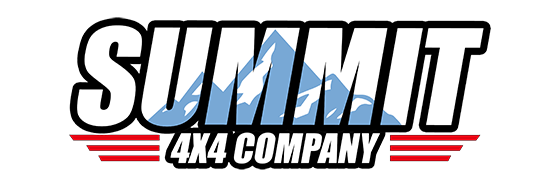Off-Road Communication 101
Posted by Summit 4X4 on 6th Mar 2020
Most people have heard about the usage of a radio in order to communicate when out playing, exploring or racing your 4x4s. What most newer people to the sport don’t know is which radio type to use, why or how to use it. Communication is key and can be a lifesaver when outdoors, whether with a group or by yourself there are ways to stay connected and safe in case something happens.
CB Radios (Civilian Band Radio) :
Commonly used in most Semi-Trucks and 4x4s. There are many advantages of having a CB mounted in your rig, including never worrying about the battery in the device dying on the trail because they are wired into your 4x4’s battery power. They can come at a higher cost than a simple hand held 2-way because of the different items needed to mount the CB and wire it in. They do require installation and sometimes a tuning process. This is commonly categorized as a “Line-of-sight” form of communication and even though you can increase the power of this radios most of the times there are some legal limitations when doing so. These are a “go-to” for most 4x4’s. They also include weather channels that will give you information about your location’s weather conditions.

Handheld 2-Way (FRS) Radios:
These are the most common kind of radios used by hikers, Boy Scouts, water sports enthusiasts and outdoor people in general whether moving via vehicle or by foot. Cheap, commonly available, these can be found on most outdoor stores, outdoor sections at the local grocery store, shopping websites, etc. Even though they are very accessible and easy to use for anyone, these kind of radios have the most limitations when it comes to power, channels and adjustability overall.
UHF/VHF Multi-band Radios:
These have proven to be the best option for some of us. They are battery powered handhelds so, you can step outside your vehicle and still communicate with your group or call for help. These also have the ability to be programed with specific channels, including weather channels that will give you information about your location’s weather conditions. Some channels require a license to use and you could be fined if found on one of those channels without a license, plus you could interfere with some of the aircraft, watercraft, transportation and first responders’ communication channels.

InReach/Spot devices:
These devices are great for Overlanding, hiking or driving through other countries going solo or with a small group of people, while still maintaining a communication circle with trusted ones. This device use GPS and sends your location and a customizable message to your loved ones or if needed, it can contact the emergency services.
Hope this helps you find the right option for your communication needs. It will require some trying out different things and seeing which one works best for you and your application. If you have friends that have different kinds of radios ask them to borrow them, try them out and make sure they work for what you do. On the trails, the most commonly used are the CB Radios and Handheld 2-Way Radios, so keep that in mind while choosing yours.
As we stated before, this is our very own opinion of what WE think is best for people doing what we do. If you need help or have any questions on this subject, stop by the shop or give us a call!



